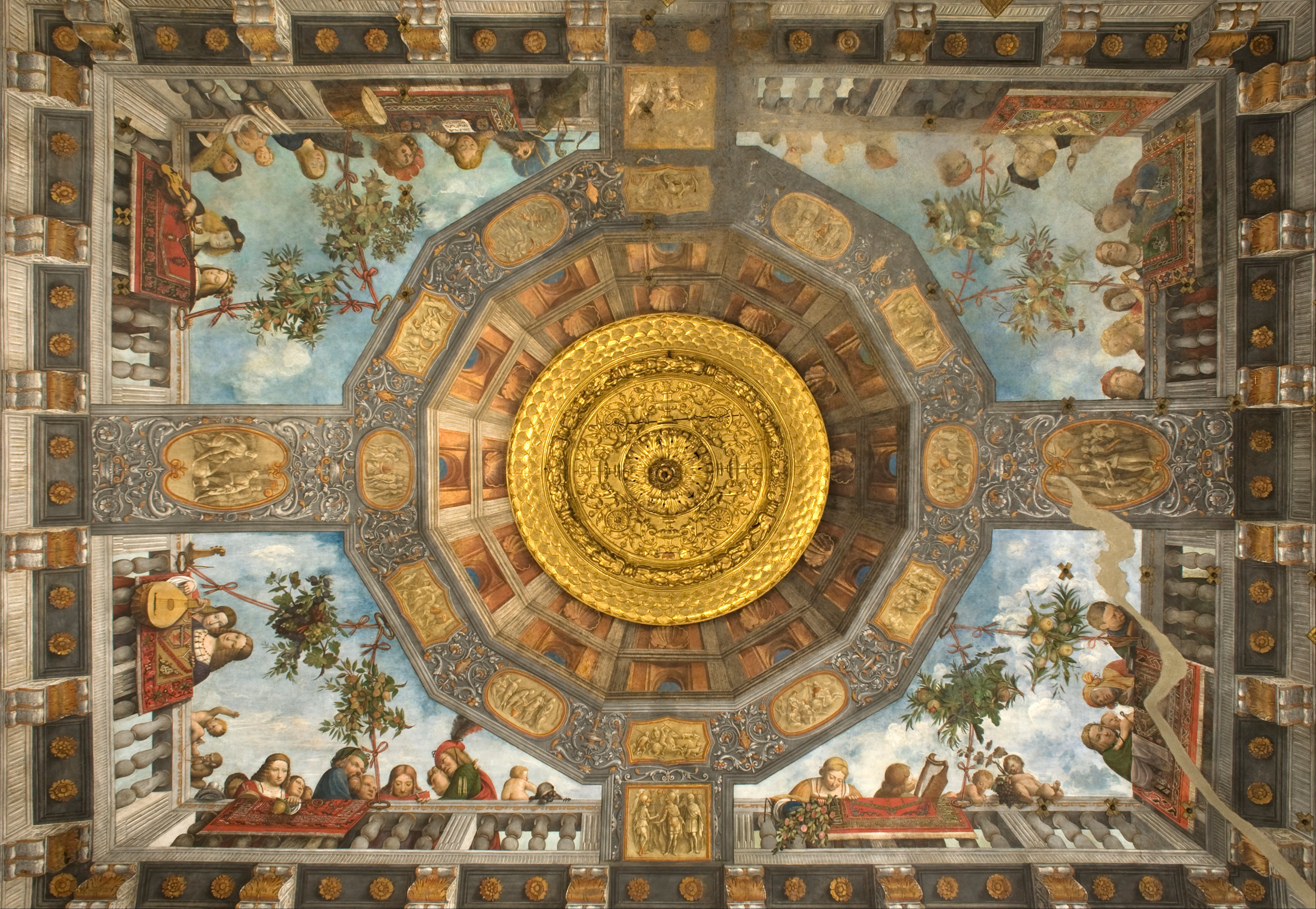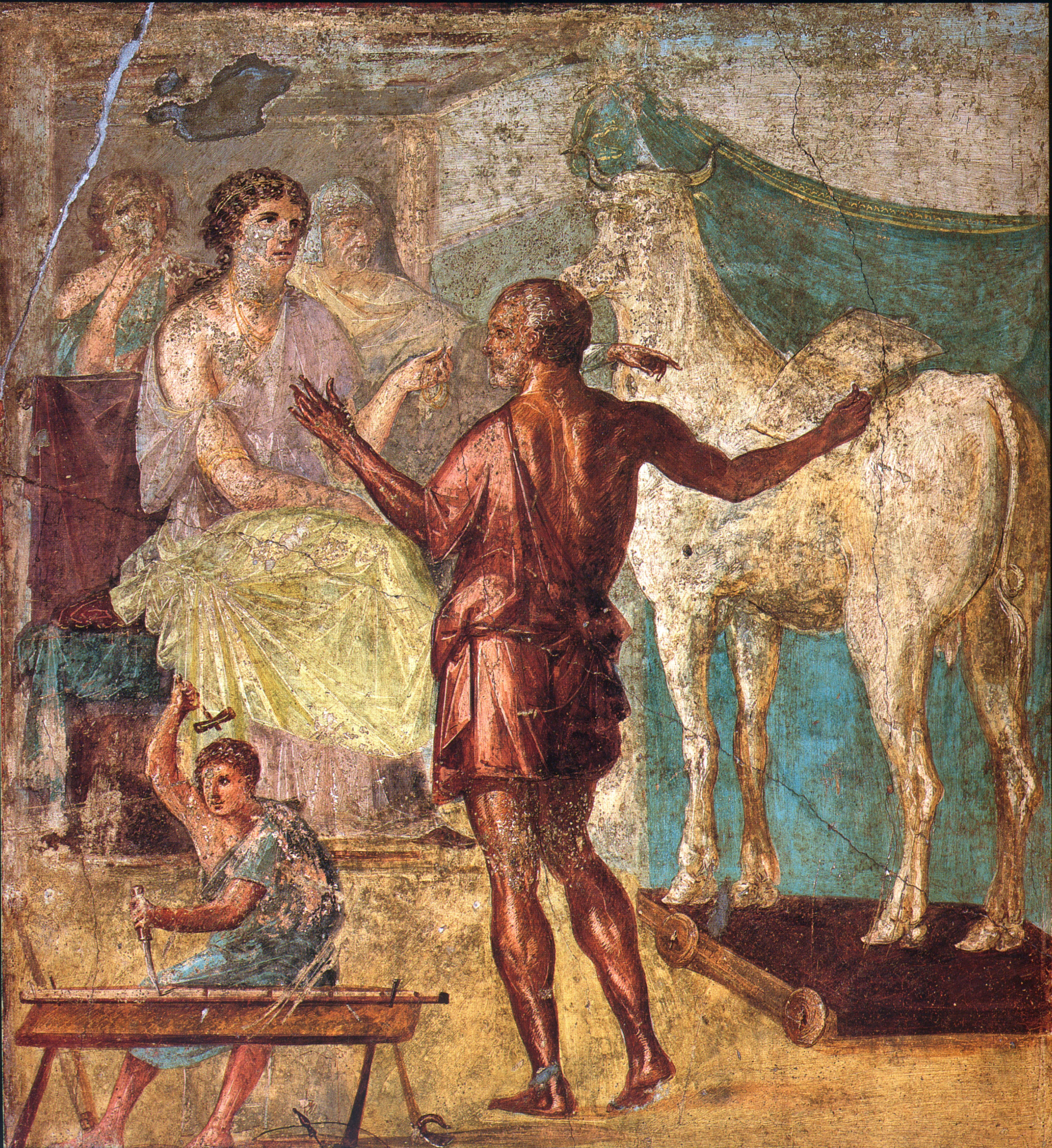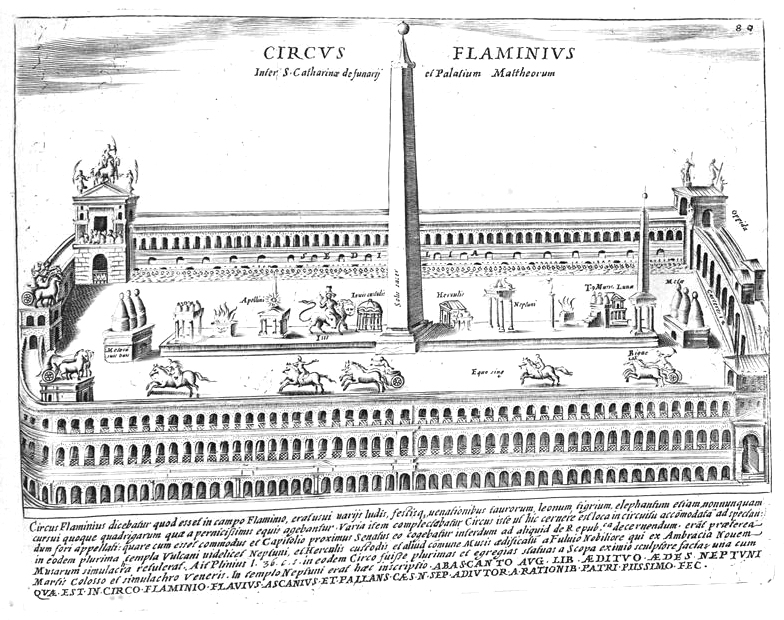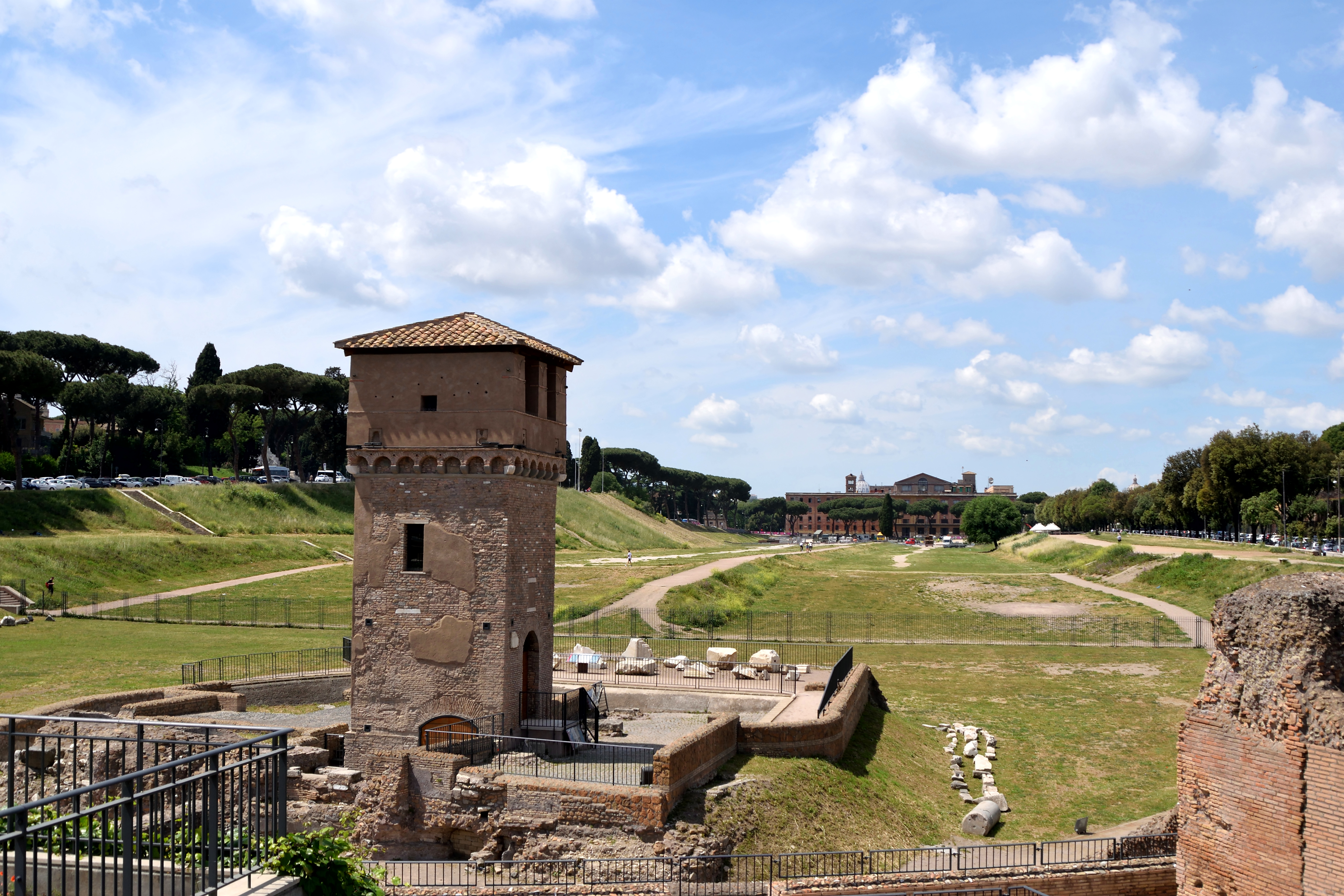|
Galleria Degli Antichi And Palazzo Del Giardino
The Galleria degli Antichi and the Palazzo del Giardino are adjacent, contemporaneous, Renaissance-style buildings located on Piazza d`Armi #1 in Sabbioneta, in the Province of Mantua, region of Lombardy, Italy. Prior to 1797, the buildings were connected to the Rocca or Castle of Sabbioneta (razed by Napoleon's forces during the Siege of Mantua), and the gallery once housed the Gonzaga collection of antique Roman statuary and hunting trophies. While the architectural design of the gallery is striking, the richness of the interior decoration of the palazzo is also dazzling. Galleria degli Antichi . The ''galleria'' or gallery was once a corridor, aligned south to north, linked to the large Sabbioneta Castle that stood inside the walled town. Described as a "grand corridor" of the castle, it was built with stone and brick in 1584–1586. It connects to the externally drab Palazzo Giardino, which through a second portico (''corridor piccolo''), once connected to the castle. The sta ... [...More Info...] [...Related Items...] OR: [Wikipedia] [Google] [Baidu] |
Sabbioneta 2010 17 (8189115056)
Sabbioneta ( egl, label= Casalasco-Viadanese, Subiunèda) is a town and in the province of Mantua, Lombardy region, Northern Italy. It is situated about north of Parma, not far from the northern bank of the Po River. It was inscribed in the World Heritage List in 2008. History Sabbioneta was founded by Vespasiano I Gonzaga in the late 16th century along the ancient Roman Via Vitelliana, on a sandy bank of the Po (whence the name, meaning "sandy" in Italian); he was its first duke, using it as a personal fortress and residence. It was also during this period that it became a minor musical centre; composers such as Benedetto Pallavicino (c. 1551–1601) were employed here by Vespasiano Gonzaga, prior to his moving to the main Gonzaga city of Mantua. Located on an alluvial ground between the Po and Oglio rivers, as well as along the route of the ancient Via Vitelliana, it occupied a strategic position in the heart of the Po Valley. For Vespasiano Gonzaga, Sabbioneta was to be a ... [...More Info...] [...Related Items...] OR: [Wikipedia] [Google] [Baidu] |
Trompe-l'œil
''Trompe-l'œil'' ( , ; ) is an artistic term for the highly realistic optical illusion of three-dimensional space and objects on a two-dimensional surface. ''Trompe l'oeil'', which is most often associated with painting, tricks the viewer into perceiving painted objects or spaces as real. Forced perspective is a related illusion in architecture. History in painting The phrase, which can also be spelled without the hyphen and ligature in English as ''trompe l'oeil'', originates with the artist Louis-Léopold Boilly, who used it as the title of a painting he exhibited in the Paris Salon of 1800. Although the term gained currency only in the early 19th century, the illusionistic technique associated with ''trompe-l'œil'' dates much further back. It was (and is) often employed in murals. Instances from Greek and Roman times are known, for instance in Pompeii. A typical ''trompe-l'œil'' mural might depict a window, door, or hallway, intended to suggest a larger room. A version o ... [...More Info...] [...Related Items...] OR: [Wikipedia] [Google] [Baidu] |
Daedalus And Icarus
In Greek mythology, Daedalus (, ; Greek: Δαίδαλος; Latin: ''Daedalus''; Etruscan: ''Taitale'') was a skillful architect and craftsman, seen as a symbol of wisdom, knowledge and power. He is the father of Icarus, the uncle of Perdix, and possibly also the father of Iapyx. Among his most famous creations are the wooden cow for Pasiphaë, the Labyrinth for King Minos of Crete which imprisoned the Minotaur, and wings that he and his son Icarus used to escape Crete. It was during this escape that Icarus did not heed his father's warnings and flew too close to the sun; the wax holding his wings together melted and Icarus fell to his death. Epigraphic evidence The name ''Daidalos'' appears to be attested in Linear B, a writing system used to record Mycenaean Greek. The name appears in the form ''da-da-re-jo-de'', possibly referring to a sanctuary. Family Daedalus's parentage was supplied as a later addition, with various authors attributing different parents to him. His fa ... [...More Info...] [...Related Items...] OR: [Wikipedia] [Google] [Baidu] |
Cupid
In classical mythology, Cupid (Latin Cupīdō , meaning "passionate desire") is the god of desire, lust, erotic love, attraction and affection. He is often portrayed as the son of the love goddess Venus (mythology), Venus and the god of war Mars (mythology), Mars. He is also known in Latin as ' ("Love"). His interpretatio graeca, Greek counterpart is Eros.''Larousse Desk Reference Encyclopedia'', The Book People, Haydock, 1995, p. 215. Although Eros is generally portrayed as a slender winged youth in Classical Greece, Classical ancient Greek art, Greek art, during the Hellenistic period, he was increasingly portrayed as a chubby boy. During this time, his iconography acquired the bow and arrow that represent his source of power: a person, or even a deity, who is shot by Cupid's arrow is filled with uncontrollable desire. In myths, Cupid is a minor character who serves mostly to set the plot in motion. He is a main character only in the tale of Cupid and Psyche, when wounded by hi ... [...More Info...] [...Related Items...] OR: [Wikipedia] [Google] [Baidu] |
Philyra (mythology)
Philyra or Phillyra (: Ancient Greek: Φιλύρα means "Tilia, linden-tree") is the name of three distinct characters in Greek mythology. *Philyra (Oceanid), Philyra, an Oceanid and mother by Cronus of Chiron. * Philyra, one of the names given to the wife of Nauplius (mythology), Nauplius, who was the father of Palamedes (Greek mythology), Palamedes, Oeax (mythology), Oiax and Nausimedon. The mythographer Bibliotheca (Pseudo-Apollodorus), Apollodorus reports that, in the ''Nostoi'' (''Returns''), an early epic from the Epic Cycle, Trojan cycle of poems about the Trojan War, Nauplius' wife was Philyra, and that according to Cercops his wife was Hesione (mythology), Hesione, but that according to the "tragic poets" his wife was Clymene (mythology), Clymene. * Philyra or Phillyra, daughter of the river Asopus, and the mother of Hypseus by Peneius.Scholia on Pindar, ''Pythian Ode'' 9. 27a The same source points out that phillyra's real name is Creusa (Naiad), Creusa is given instead o ... [...More Info...] [...Related Items...] OR: [Wikipedia] [Google] [Baidu] |
Pietro Martire Pesenti
The Pesenti or Sabbioneta family of artists was active in Cremona from the 15th to the 17th centuries. The founder of the dynasty of artists was Galeazzo Pesenti Seniore, also called Il Sabbioneta, active in the 15th century in Cremona. Sabbioneta refers to a parish in Cremona. His sons Francesco Pesenti and Vicenzo Pesenti were painters. A painting of the ''Virgin with Saints Gregory and Bartholomew'' (1557) found in parish church of Spigarolo oltre Po, was attributed to Francesco. An ''Adoration of the Magi'' at Sant'Agostino, Cremona was signed ''Franciscus Sabloneta Cremonenesis''. In 1570, Pietro Martire Pesenti restored paintings in the Cathedral of Cremona. He also designed a funereal catafalque for Senator Ala, and the triumphal arch for the arrival of Archduke Rudolf to Cremona on December 21 of 1563. He helped create the decoration for the Palazzo del Giardino in Sabbioneta, working under Bernardino Campi. Giovanni Paolo Pesenti and Martino Pesenti were also active ... [...More Info...] [...Related Items...] OR: [Wikipedia] [Google] [Baidu] |
Circus Flaminius
The Circus Flaminius was a large, circular area in ancient Rome, located in the southern end of the Campus Martius near the Tiber River. It contained a small race-track used for obscure games, and various other buildings and monuments. It was "built", or sectioned off, by Gaius Flaminius in 221 BC. After Augustus divided the city into 14 administrative regions, the Circus Flaminius gave its name to Regio IX, which encompassed the Circus and all of the Campus Martius west of the Via Lata. Topography and structures In its early existence, the Circus was a loop, approximately 500 meters in length stretching across the Flaminian Fields (''Prata Flaminia''). Varro states that the actual Circus was built around the Fields, which were already a hallowed site for games by the time the Circus was laid in 220 BC. The '' ludi Taurei'' were hosted in the Fields since they were inaugurated by Rome's last king Lucius Tarquinius Superbus (d. 495 BC). During the 2nd century BC, this broad spa ... [...More Info...] [...Related Items...] OR: [Wikipedia] [Google] [Baidu] |
Circus Maximus
The Circus Maximus (Latin for "largest circus"; Italian: ''Circo Massimo'') is an ancient Roman chariot-racing stadium and mass entertainment venue in Rome, Italy. In the valley between the Aventine and Palatine hills, it was the first and largest stadium in ancient Rome and its later Empire. It measured in length and in width and could accommodate over 150,000 spectators. In its fully developed form, it became the model for circuses throughout the Roman Empire. The site is now a public park. Events and uses The Circus was Rome's largest venue for ''ludi'', public games connected to Roman religious festivals. ''Ludi'' were sponsored by leading Romans or the Roman state for the benefit of the Roman people (''populus Romanus'') and gods. Most were held annually or at annual intervals on the Roman calendar. Others might be given to fulfil a religious vow, such as the games in celebration of a triumph. In Roman tradition, the earliest triumphal ''ludi'' at the Circus were ... [...More Info...] [...Related Items...] OR: [Wikipedia] [Google] [Baidu] |
Metamorphoses
The ''Metamorphoses'' ( la, Metamorphōsēs, from grc, μεταμορφώσεις: "Transformations") is a Latin narrative poem from 8 CE by the Roman poet Ovid. It is considered his ''magnum opus''. The poem chronicles the history of the world from its creation to the deification of Julius Caesar in a mythico-historical framework comprising over 250 myths, 15 books, and 11,995 lines. Although it meets some of the criteria for an epic, the poem defies simple genre classification because of its varying themes and tones. Ovid took inspiration from the genre of metamorphosis poetry and some of the ''Metamorphoses'' derives from earlier treatment of the same myths; however, he diverged significantly from all of his models. One of the most influential works in Western culture, the ''Metamorphoses'' has inspired such authors as Dante Alighieri, Giovanni Boccaccio, Geoffrey Chaucer, and William Shakespeare. Numerous episodes from the poem have been depicted in works of sculpture, ... [...More Info...] [...Related Items...] OR: [Wikipedia] [Google] [Baidu] |
Giovanni Francesco Bicesi
Giovanni may refer to: * Giovanni (name), an Italian male given name and surname * Giovanni (meteorology), a Web interface for users to analyze NASA's gridded data * ''Don Giovanni'', a 1787 opera by Wolfgang Amadeus Mozart, based on the legend of Don Juan * Giovanni (Pokémon), boss of Team Rocket in the fictional world of Pokémon * Giovanni (World of Darkness), a group of vampires in ''Vampire: The Masquerade/World of Darkness'' roleplay and video game * "Giovanni", a song by Band-Maid from the 2021 album ''Unseen World'' * ''Giovanni's Island'', a 2014 Japanese anime drama film * ''Giovanni's Room'', a 1956 novel by James Baldwin * Via Giovanni, places in Rome See also * * *Geovani *Giovanni Battista *San Giovanni (other) San Giovanni, the Italian form of "Saint John", is a name that may refer to dozens of saints. It may also refer to several places (most of them in Italy) and religious buildings: Places France *San-Giovanni-di-Moriani, a municipality of the Hau . ... [...More Info...] [...Related Items...] OR: [Wikipedia] [Google] [Baidu] |
Baucis And Philemon
In Ovid's moralizing fables collected as ''Metamorphoses'' is his telling of the story of Baucis and Philemon, which stands on the periphery of Greek mythology and Roman mythology. Baucis and Philemon were an old married couple in the region of Tyana, which Ovid places in Phrygia, and the only ones in their town to welcome disguised gods Zeus and Hermes (in Roman mythology, Jupiter and Mercury respectively), thus embodying the pious exercise of hospitality, the ritualized guest-friendship termed '' xenia'', or ''theoxenia'' when a god was involved. Story Zeus and Hermes came disguised as ordinary peasants, and began asking the people of the town for a place to sleep that night. They had been rejected by all, "so wicked were the people of that land," when at last they came to Baucis and Philemon's simple rustic cottage. Though the couple was poor, their generosity far surpassed that of their rich neighbors, among whom the gods found “doors bolted and no word of kindness." Af ... [...More Info...] [...Related Items...] OR: [Wikipedia] [Google] [Baidu] |
Grotteschi
Since at least the 18th century (in French and German as well as English), grotesque has come to be used as a general adjective for the strange, mysterious, magnificent, fantastic, hideous, ugly, incongruous, unpleasant, or disgusting, and thus is often used to describe weird shapes and distorted forms such as Halloween masks. In art, performance, and literature, however, ''grotesque'' may also refer to something that simultaneously invokes in an audience a feeling of uncomfortable bizarreness as well as sympathetic pity. The English word first appears in the 1560s as a noun borrowed from French, and comes originally from the Italian ''grottesca'' (literally "of a cave" from the Italian ''grotta'', 'cave'; see grotto), an extravagant style of ancient Roman decorative art rediscovered at Rome at the end of the fifteenth century and subsequently imitated. The word was first used of paintings found on the walls of basements of ruins in Rome that were called at that time ''le Grot ... [...More Info...] [...Related Items...] OR: [Wikipedia] [Google] [Baidu] |
.jpg)








